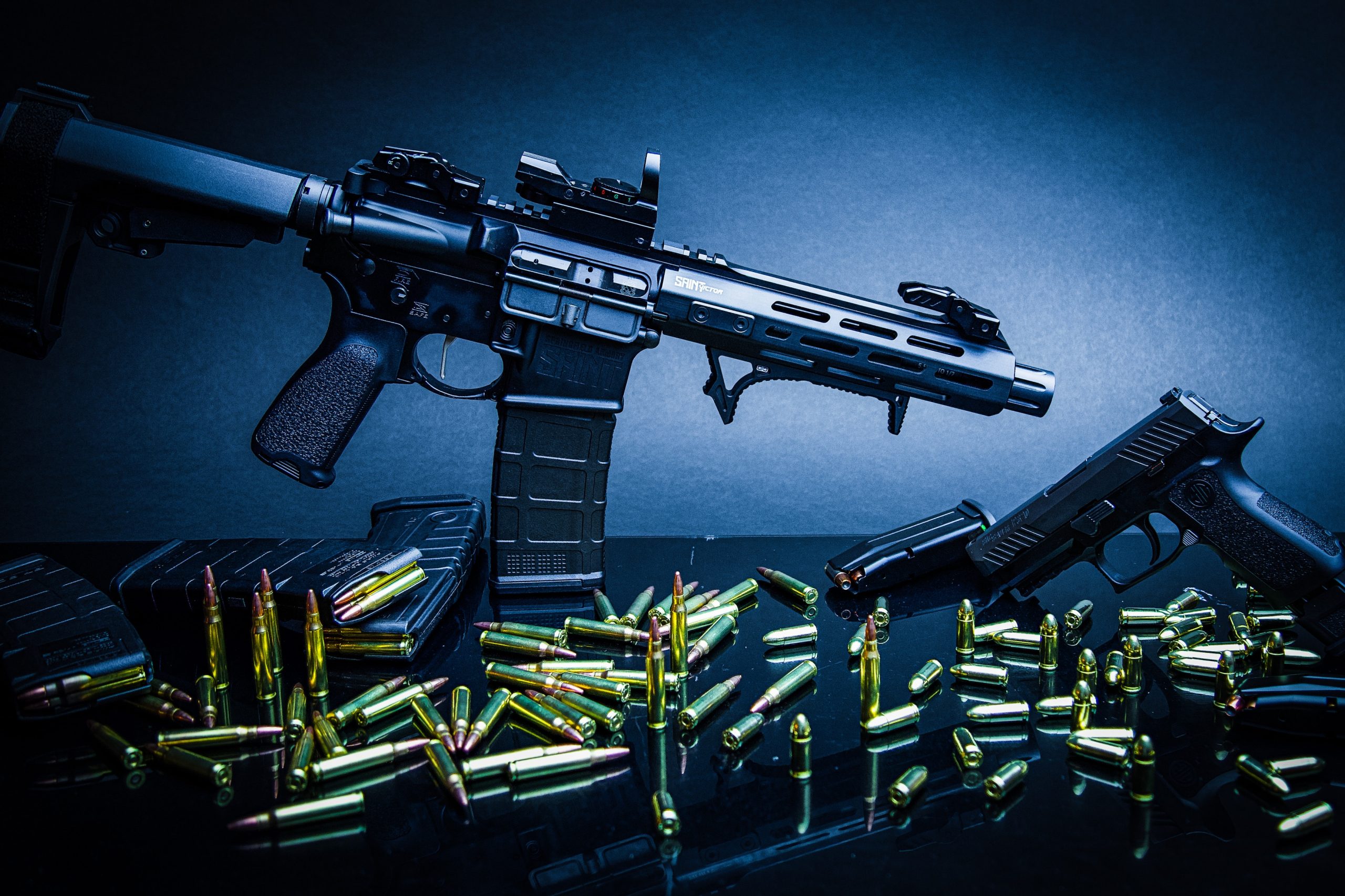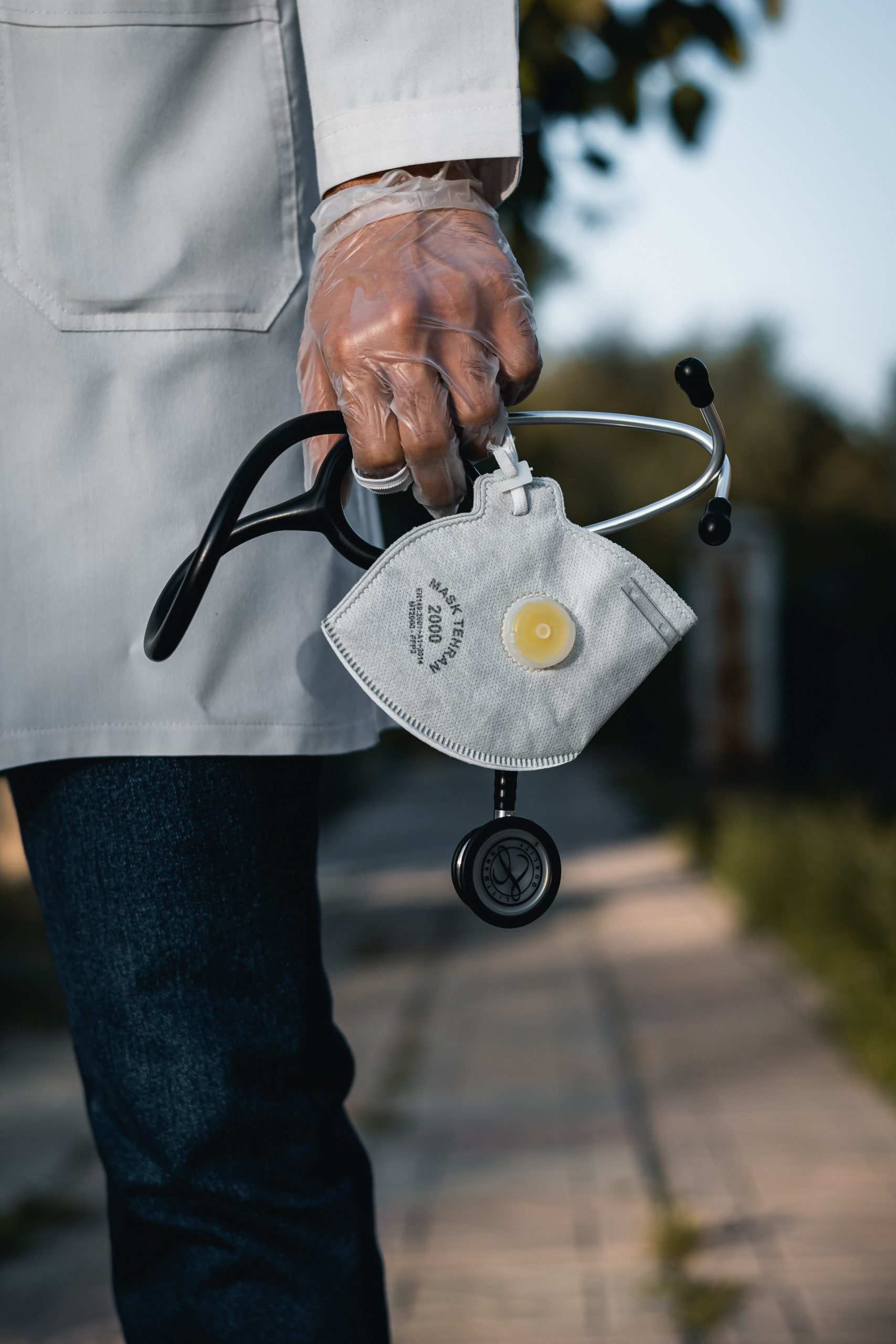Anxiety Depression Mental Health Suicide Prevention
Mental Health Crisis • What is Mental Illness
By Sawayer
0 Comments
Category: Mental Health
Defining A Mental Health Crisis

How We Profile School Shooters
In the last 15 years, we have seen an increase in the number of school shootings across the country, from the Elementary Schools to the College Campuses.
After every shooting, a post-event analysis by lae enforcement occurs, where investigators look for indications of possible mental illness, drug use or trauma to see if there are common characteristics between school shooting events. This helps police and school officials to be more proactive in preventing such tragedies and makes schools safe
Below you will find a link to an article in Psychology Today Magazine which provides you with a view into how investigators conduct these post-shooter event evaluations and what some of their finding tell us about the characteristics that these identified “shooters” have in common and the behaviors that we can look for ahead of time.
Male Sex Abuse Survivors
The following article on Male Survivors of Sexual Abuse, is from Fredonia.edu, and provides information about the sexual assault of men and the resources available to survivors. julie.bezek@fredonia.edu
Male Survivors
Many people believe that sexual assault is only committed by men against women. While the majority of sexual assaults victims are women, the CDC and Department of Justice estimate that about 3% of American men — or 1 in 33 — have experienced an attempted or completed rape in their lifetime. The following provides information about the sexual assault of men and the resources available to survivors. There are is also information for male survivors of childhood sexual abuse.
Understanding sexual assault of men
Who can be a perpetrator of male sexual assault
What are some of the feelings male survivor may experience?
What should I do if I was sexually assaulted?
How can I help a male friend who has been sexually assaulted or sexually abused in the past?
Childhood Sexual Abuse
Additional Resources for Male Survivors (website, articles, books)
Understanding sexual assault of men
Many people don’t take sexual assault of men seriously. This is one of the reasons why men have a difficult time reporting what happened and why the rates of male sexual assault are thought to be significantly under-reported. If a survivor’s friends think that male sexual assault is a joke, he will feel isolated and afraid to tell anyone. Sexual assault is a painful, traumatic experience for any victim.
Sexual assault is any unwanted or forced sexual contact. It can be committed by the use of threats or force or when someone takes advantage of circumstances that render a person incapable of giving consent, such as intoxication. Sexual assault of men can include unwanted touching, fondling, or groping of a male’s body including the penis, scrotum or buttocks. Rape is any kind of sexual assault that involves forced oral or anal sex, including any amount of penetration of the anus or mouth with a body part or any other object.
Sexual assault happens to men.
It is only a myth in our society that men are not sexually assaulted, or that they are only sexually assaulted in prisons. In fact, 9% of all rape victims outside of criminal institutions are male (U.S. Department of Justice, 1994). It is important to note, however, that very few studies have been done to document the sexual abuse or sexual assault of males. Furthermore, it is estimated that male survivors report sexual assault and abuse even less frequently than female survivors, and so it is difficult to make an accurate estimate of the number of men and boys who are being assaulted and abused.
Male survivors have many of the same reactions to sexual assault that women do.
For both male and female survivors, anger, anxiety, fear, confusion, self-blame, shame, depression, and even suicidal thoughts are all common reactions for someone who has experienced a sexual assault. Men, however, are more likely than women to initially respond with anger, or to try to minimize the importance or severity of the assault. Male survivors are also more likely to experience substance abuse to try to cope with the assault. Additionally, a survivor of a male-on-male rape may question his sexuality, or how others perceive his sexuality.
Ideas in our society prevent male survivors from speaking out about sexual assault.
Because of how men are socialized and expected to behave in our society, a male survivor of sexual assault may feel as if he is not a “real man” Because men are often expected to always be ready for sex and to be the aggressors in sexual relationships, it may be difficult for a man to tell people that he has been sexually assaulted. Also, there are some beliefs that male survivors, especially if abused as a child, will go on to become offenders themselves. This stigma may negatively impact a male survivor’s social experiences, and it may also lead male survivors to avoid disclosure.
Homophobia causes men who have experienced a male-on-male rape to fear telling their stories.
If the perpetrator is a man, the survivor may fear being labeled gay by those he tells of the assault. He may even question his own sexuality, especially if he experienced an erection or ejaculation during the assault. If the survivor identifies as gay, and in the process of coming out, he may question how others perceive his sexual orientation. He may also fear that he will have to disclose his sexual orientation if he tells others about the assault. Homophobia stereotypes may affect a man’s decision to disclose. For example, the stereotype that gay men are promiscuous can lead people to believe the encounter was consensual. Also, because of these stereotypes, some people may think that they recklessly place themselves in situations to be assaulted, resulting in victim-blaming attitudes.
Who can be a perpetrator of male sexual assault?
Anyone, regardless of gender or gender identity, can sexually assault a man. However, most sexual assaults against men are committed by other men, who actually identify themselves as heterosexual. It’s important not to jump to the conclusion that man-against-man sexual assault only happens between men who are gay. Sexual assault is not about sexual desire or sexual orientation; it’s about violence, control, and humiliation.
What are some of the feelings a male survivor may experience?
Any survivor of sexual assault may experience the following feelings, but male survivors may experience these feelings in a different way:
Guilt — as though he is somehow at fault for not preventing the assault because our society promotes the misconception that men should be able to protect themselves at all times.
Shame — as though being assaulted makes him “dirty,” “weak,” or less of a “real man.”
Fear — that he may be blamed, judged, laughed at, or not believed.
Denial — because it is upsetting, he may try not to think about it or talk about it; he may try to hide from his feelings behind alcohol, drugs, and other self-destructive habits.
Anger — about what happened; this anger may sometimes be misdirected and generalized to target people who remind him of the perpetrator.
Sadness — feeling depressed, worthless, powerless; withdrawing from friends, family, and usual activities; some victims even consider suicide.
If a man became sexually aroused, had an erection, or ejaculated during the sexual assault, he may not believe that he was raped. These are involuntary physiological reactions. They do not mean that the person wanted to be sexually assaulted, or that they enjoyed the traumatic experience. Just as with women, a sexual response does not mean there was consent.
The experience of sexual assault may affect gay and heterosexual men differently. It is important to remember that the sexual assault did not occur because they are gay. Heterosexual men often begin to question their sexual identity and are more disturbed by the sexual aspect of the assault than any violence involved.
What should I do if I was assaulted?
Please click here for more information on reouces avaulable for sexual assault survivior and please click here for information how to report sexual violence.
How can I help a male friend who has been sexually assaulted or sexually abused in the past?
- Take it seriously.
- Ask him what you can do to support him.
- Let him know that it was not his fault.
- Let him know he is not alone.
- Find out about resources that are sensitive to male victims and let him know his options.
- Tell him that help is available and encourage him to call a rape crisis hotline.
- Don’t pressure him to do certain things. He needs to know that he has choices and that you support him.
Childhood Sexual Abuse
Counseling can be an integral part of recovery from a childhood sexual abuse. We encourage survivors to contact the Counseling Center at 716-673-3424. Services are free and confidential. They are located in LoGrasso Hall and are open M-F 8:30 am – 5:00 pm. The Resources section has specific listings for childhood sexual abuse survivors.
Suicide – The New Epidemic
The reality of depression and suicide among active military, veterans, law enforcement, school children, mental health consumers and the general population has continued to skyrocket.

Training for Mental health professionals, police officers, school officials, and military commanders is providing better ways to identify and treat depression, PTSD, anxiety, and drug use that play a large role in both attempted and completed suicides.
The link below from the American Psychiatric Association identifies what Depression looks like!
https://www.psychiatry.org/patients-families/depression/what-is-depression
We are getting better at training community members on how to approach such situations, and the attached video training on the program called “Just Ask” has proven helpful in this venture.
A podcast forum that specifically has addressed suicide among active military and our Veterans entitled Head Space and Timing is also attached. The problems for those who experience military life and have difficulty finding their meaning in society upon discharge is a reality we must address. Here is the link below.
https://veteranmentalhealth.com/podcast/
The Website for The National Suicide Hotline is linked below.
https://suicidepreventionlifeline.org/
As usual Sawayer Logistics @ sawayer.com, is here to offer coaching and counseling services to those at risk.
Time Management
Why Worry About Time and Its Management?

If you feel as though you are always having to juggle time to do what is expected of you, then learning better time management can help you master time instead of time mastering you!
As an Expert Level Time Management Coach, and someone who has manage organizations of different sizes, I have learned a great deal about how we view this thing called time.
In Ecclesiastes 3 and Chapters 1-22, there is an oft quoted scripture about time. I reference it here, not as a advocate of any doctrine, but because it tells us that the problem of time has been discussed for a very long time and this particular scripture, gives us a perspective on time and how priorities in life often determine how we use time. Â
https://biblia.com/bible/esv/ecclesiastes/3/1-22
Time as a unique phenomenological structure created by the human mind’s ability to segment reality into distinct quantifiable units is not found outside of humans. As such, the mind as difficulty releasing its focus away from timed events and simply entering into a state of mind-less consciousness that feels as though boundaries have vanished.
This sensation or lack of time experience is extremely difficult to maintain for any length of time. The natural response is an experience of becoming disoriented and experiencing anxiety.
Perhaps, underlying this anxiety is another unique aspect of being human that is found inside our unique brains. The neurological structure of the brain and the mind that is contained within it, can only vicariously experience death through the witnessing of anthers’ death.
From this witnessing of the “end of another’s time”, we gain the concepts of beginning and end, past and future, as well as start and finish. Those concepts are entrenched in all languages of the world.
Time, as reflected in a watch or clock is observed to exist externally and visually, However, physicists have argued that time has no reality to it!
So it seems that we are stuck between our brains ability to structure reality in discrete and quantifiable units and the possibility that we are slaves to something that is an illusion.
That said, time is the music that we all dance to from the time we are old enough to understand it and to understand our own death. I remember reading somewhere that a wise person always envisions death sitting on their shoulder because it served as a constant reminder to be as productive and authentic as we could be.
So here we are, stuck with trying to learn how to manage time, an illusion and reality at the same time. We all complain that “time flies” or there isn’t enough time to accomplish our goals.
As an Expert Time Management Coach, I can help you develop the tools and strategies to at least make the most of your time.
Time, once spent, is forever gone. So wasting it by doing meaningless or unproductive repetitive acts is like squandering the seconds, minutes, hours, and days of your life. 
Below is the first of many reference links to get you considering how to implement time management. This one comes from the good folks at Wiki. YouTube will also be made available in the YouTube section of Sawayer Logistics.
https://en.wikipedia.org/wiki/Time_management
Time Management Strategies: How to Get It All Done If You Use Your Mind by Living Order SA on YouTube
Transgender Anti-Discrimination Reversal
This reversal by the Trump Administration on an already vulnerable group of Americans reflects an anti-inclusionary philosophy.
The Transgender issue is something that I have personally had involvement with as both a professional and as a friend. I was raised “old school” when it came to sex and sexuality, so it has taken a lot of “unlearning” and “re-learning” to become more understanding and supportive of those who have chosen to make the physical, emotional, spiritual, and mental transitions that come with the choice to change ones sexuality.
This link reflects the continued prejudicial thinking toward the Transgender Community by our governmental leaders at the present time in history.
Law Enforcement At A Crossroads of Change
Law Enforcement At A Crossroads of Change
Writing about culture change in policing within today’s challenging environment is no easy task. Due to the implications of culture change within policing agencies in today’s confrontational environment, I have tried to keep focused on what I believe are the prominent internal cultural challenges that law enforcement agencies across the country face today.
While I will specifically address the issue of police culture, we must always remember, that the larger societal culture, which itself, is composed of other “sub-cultures” also factor into the how police culture is formed and operates today. Any attempts to modify police culture MUST also acknowledge the values and beliefs that dominate the general culture. It is that general culture where legislatures on both the state and federal level “operationalize” the values of their communities.
An example of this would be the larger societies values and beliefs regarding justice, race, poverty, crime, and so on. These are the base values that go into laws and laws are a base value in culture and more specifically in police cultures.
So first I have to say that I am offering this perspective only from my personal experiences, without offering references to hard research. I am a long-time law enforcement, corrections and mental health professional, with a career that began in the 1980’s. I also a Master Peace Officer, Mental Health Peace Officer, Licensed Professional Counselor and Certified Train the Trainer for the Blue Courage Program and I believe strongly in Community Policing and Restorative Justice. But perhaps my biggest credential is my heart for the profession of law enforcement.
That said, I certainly welcome any dialogue on this issue here at Sawayer Logistics at sawayer.com. So here is my pitch.
Most change within institutionalized settings is unfortunately reactive, as opposed to proactive. This is especially true when in comes to organizational change. The recent violence in America, has once again forced police agencies to reflect on how much or little they should change. Police agencies, by their structure are resistant and slow to change. Some reasons for this are because they are conservative and are accountable to political bodies within the communities they serve. We often hear the adage, “If it ain’t broke, don’t fix it!”. But what exactly is broke and where is broke found?
The George Floyd death would certainly indicate that the four police officers involved were broken in terms of both their actions and inaction that lead to Floyd’s murder. We need to ask ourselves if cops can be murderers and that is very distasteful question to even ask. On its’ face, such thoughts seem to fly in the face of what we as professional peace keepers are mandated to do….Serve and Protect.
Since the Floyd issue is far from an isolated event, it may be time to look for answers about who we serve, how we serve, and why we serve. While minorities are over-represented in such tragic encounters with law enforcement, we tend to focus on race relations when addressing the question of what to do. I would suggest that we all, somewhere in our guts, understand that no new or improved trainings, policies, and procedures will have any lasting effect unless we change our current policing culture and the values within that culture.
Cultures are funny animals. They are often created slowly, over decades. They often take decades to change because by their very nature, they are conservative entities. Changing police culture is substantially more challenging than implementing new policies, procedures and trainings. While there are studies on police cultures, there are not many that specifically provide a “how to” paradigm. All of the literature points to the high level of resistance to police culture change from both within the ranks and from police administrators. It’s a tough mountain to climb.
The recent events in our cities and the degree of national and world attention to those events are pushing us up that mountain. If we are to reach the top, we must see the value of making the climb, even after the voices for change become quiet. We must change police culture because we are professionals bearing some of the strongest and most respected job responsibilities in society. So was there an identifiable starting point that contributed to today’s police culture? Let me suggest that was such a point. I will also suggest that we have some available tools to help get to a new beginning.
Since Americas trauma and the resulting transformation, law enforcement has been exposed to a new wrinkle within its’ culture. “Para-Militarization” has invaded the cop culture with a vengeance. The war and the warrior mentality, along with almost free military equipment, from helicopters to transports and Humvees, are standard fare in most agencies today.
At the time of 9-11, nothing seemed to out of bounds in our flight to protect the homeland from foreign terrorists. The intent was to never again be the unaware victim. Americans faced new security procedures at their airports and at their banks.
The less obvious change in procedures was occurring in law enforcement agencies, which historically had some type of command and control infrastructure. As a result, the transition to a more militarized culture was somewhat familiar territory. The availability of the military equipment merely solidified that cultural transition.
I remember training’s that I attended, where we were told that we were the “Sheepdogs”, protecting the vulnerable “Sheep” from the terrorist predators. Ironically, the trainings focus was on school violence. This new mantra ultimately was reflected in the idea that we were now the new para-military heroes, deployed to Americas streets in our surplus military equipment and attire, to kick some serious ass.
Somewhere and somehow this new mindset morphed into a permanent part of the police culture in such a way that it became the antithesis of community policing. With foreign enemies largely destroyed on American and foreign soil, the new cop culture with all of its surplus military equipment, seemed like a dog without any cats.
The implementation and deployment of special units know as SWAT teams began to play a central part in departments across the land. In the process, the officers participating in those units began to gain a great deal of cultural influence and the mindset within policing went from “we are part of the community”, to the “community are dumb sheep and we are superior sheepdogs”, to “them vs. us”.

Now to be clear, historically, law enforcement had its’ “suspects” some of which included those who were clearly “not us”. Foreigners, minorities, the poor, the mentally ill, and the law violators living in our communities. There was a growing institutionalized prejudice within the policing culture, that, until the last 20 years, wasn’t even discussed in training academies. There were no Humvees or tactical units in most departments back then.
With the 9-11 terrorists extinguished, the old familiar, “not us” groups became the new “bad guys” or to put in another way, the “them”. Agency leadership in departments could not resist the offer of getting surplus military equipment to supplement their fleets. Most departments had few dollars to spare for such costly equipment. It would take little effort to move toward creating SWAT tactical teams to utilize the new armada.
No one objected, not the city councils, not the county commissioners, not the state governors, not the congress, and not even members of the local communities. Without open discussion regarding why and how this para-militarization was happening, the parameters of its’ implementation and its’ goals, the cultural change went underground and out of sight.
The new police culture was now one that had the capacity for aggression and tactical interventions. Community policing, where officers were in personal contact with the man on the street for most departments stopped. Contacts with the public became formal and impersonal. It was now, “them vs. us”.
The cop, sitting in the standard issue patrol car holding the para-military, aggressive mindset doesn’t need a Humvee to feel his power over others anymore. The “Sheepdog” has now lost it’s protective instinct toward the sheep. There are good sheep and bad sheep…white sheep and black sheep.
Body cameras, which became possible and practical to issue because of technology, were supposed to protect cops and community members alike. Instead they were often resented by line officers as just another piece of “squealer” technology that carried yet another set of policies and procedures that had to be followed. In actuality, these cameras often have served a preventative function when seen as an officer protection.
So what does all of this imply for changing police interactions with the communities they serve?
I contend that the violence on American streets will not be solved by just better training alone because the training will not overtake the current police culture. Instead, there has to be more open contact and communication at the “street officer” level with the common and every day community members they serve.
There needs to be not just more tactical trainings but also a focus on officer mental and spiritual well being. It’s the only way to stop the “them vs. us” mentality that justified para-military interventions. Yes, we can have working groups and task forces, but the real change is at the street level by empowered cops who have the right mindset and the right heart for the profession and are rewarded for that as opposed to being shamed for it!
The most effective equipment has to be controlled by the heart first and the mind second, which then controls the body. For those of us who are authorized under very limited conditions, to take a life, the heart must be right.
Policies and procedures and trainings don’t change the heart. Open conversations and regular contact with the communities we serve as “street level cops” however does help tremendously.
It’s that contact that can either foster paranoia and hate or goodwill, especially when it involves being in touch with the “them”.
It will take time. Maybe we need to just go ahead and start painting those Humvees in pastels colors now!!
The Blue Courage training program for law enforcement officers and the perspective that it offers on community justice and community policing, should be a critical component of most law enforcement training. It and similar programs are what is needed now, more than new rules or new procedures or new training, you must change the heart in order to have positive community contact, which takes…well…Blue Courage!
The BlueCourage.com webpage is full of great articles and other offerings for LEOs (Law Enforcement Officers).
Links To Interesting Stuff
There is a vast amount of information that is accessible thru site links on the internet.
By incorporating links that are relevant to the areas of content discussed on the Sawayer Logistics web page, I am able further educate blog readers, using interesting materials created by other knowledgeable experts in the fields of mental wellness, logistics, coaching and counseling. As time goes on and readers request more types of information, the list of links will grow. Feel free to make suggestions for links that you think fit the topics I present here.
This post is the starting place to browse those links, click and explore.
Also, don’t forget the YouTube links over on the Navigation Menu!!
HAPPY CLICKING!
Why A clinical Social Worker Quit Being A Therapist
NAMI – National Alliance on Mental Health
Suicide Awareness and Prevention Training
Covid19 and Mental Health
https://www.apa.org/topics/covid-19/grief-distance
Vision Boards and Goals
https://www.ellevatenetwork.com/articles/8006-using-a-vision-board-to-set-and-achieve-your-goals
Decision Matrix To Help Make the BEST Choices
Covid19 and Mental Health
It’s a well recognized fact that major, wide spread disasters often bring about unintended consequences. The Covid 19 worldwide pandemic has been such an event, causing unintended consequences for the provision of mental health services. While these consequences have been “unintended” they are not necessarily bad.

Prior to the Covid19 pandemic, video conferencing was just taking on deep roots in the business world. Platforms like Skype, Zoom, and Lifesize Cloud, were valued for their different capabilities, but especially because the provided good security protocols against cyber criminals along with financial costs savings.
Some medical health care systems that served rural parts of America, where doctors were in short supply had also begun using video conferencing to provide expanded services to both patients and doctors living in remote and thereby often under served areas.
One such use of video conferencing is Project ECHO, https://echo.unm.edu/, which is generally University based, was already providing telehealth services to individuals, and consultation from medical specialists to rural doctors who were connected via the internet.
Outside of business and medical applications of video conferencing, there was simultaneously, a growing number of popular social media platforms that had become available on line. The more popular ones being Messenger, JOI, DUO, WhatsApp, Hangouts, Marco Polo, Face Time, Houseparty, Instagram, and Discord were quickly replacing texting and phone calls. But while these technologies and platforms were already in place prior to Covid19, their use was aimed mostly at general social sharing and entertainment.
Covid19 changed all of that at warp speed. The newly invoked public health protocols called for social distancing and shelter in place rules which meant that individual mobility and interpersonal contact was restrained in an effort to limit contagion of Covid19.
Personal protective equipment items such as disposable gloves and masks were being used for the times that individuals had to venture outside of their homes, causing further restraint. Workers and the business services they were part of were divided into essential and non-essential categories.
Any venue where a large gathering was possible was closed or severely limited in numbers. This included work sites, churches, schools, etc.
This sudden change in mobility and physical contact then created it’s own set of problems. Prior to the pandemic, Mental Health Service providers, had begun utilizing video technology to maximize mental health resources and save time, had to a limited degree, already been in place, but were used mainly as an option to the preferred face to face contacts. The reason? Insurance reimbursements. Most of the insurance payers would not reimburse for video therapeutic services. When individual therapists and mental health agencies attempted to limit their staffs exposure to Covid19, the use of video conferencing for staff working from home grew as fast as the virus!
Most clients had access to smart phones, which were capable of video conferencing and many consumers were already familiar with video communication thru their own personal use of social media. But this increased utilization of video conferencing was only the beginning for changes in Mental Health Services.
Covid19 introduced multiple mental and physical stressors across the board. There was no physical or emotional escape into a place of safety.
This was compounded by he lack of any available specific vaccinations against Covid19, the long incubation period, the high level of contagion during the incubation period and the lethal outcomes for certain populations, the governmental mandated social distancing, the inability to be with loved living outside the home or with family who were stricken by the disease, the over-burdened health care system that struggled to keep up with known cases while keeping staff safe, and the fear that a lack of testing, meant that the pandemic could be anywhere and could be much more widespread than was known.
All of these issues, overwhelmed the normal physical and emotional coping mechanisms in much of the population.
Long term, forced isolation began to manifest itself in symptoms of depression, anxiety, PTSD, and increased substance abuse. Hospitals and emergency rooms that were now focused on providing medical interventions to the virus patients, had to limit or re-prioritize mental health services.
But a silver lining from the pandemic unexpectedly emerged for both medical providers and mental health providers. The silver lining came in the form of redefining social and legal priorities and specifically by waiving traditional Federal, State, and local regulations that slowed down the ability to provide direct medical and psychiatric services quickly and across jurisdictions.
Legal restrictions for professionals who were now being asked to provide help outside of the State where they held licensed to practice had to be relaxed and waived. The insurance companies began to authorize increases in the number and types of services that they would pay for. This was especially true for mental health service providers.
Previously, it was very difficult to get reimbursed for providing tele-behavioral health to individuals. The mental health system was historically geared to paying for services provided in “brick and mortar” offices and clinics, which had now shut down in order to limit physical contact between staff and clients.
The traditional paradigms of service provision were forced to shift and the shift was made available by the reliability of the internet and dependable software platforms that could temporarily substitute for the brick and mortar service model.
Schools and Churches quickly followed suit. The new reality was virtually, “virtual” reality.
Now to be clear, “virtual” is not a substitute for being with another individual in person either for social contact or professional contact. It is merely a means of providing services, when the in person contact is impractical or potentially dangerous. “Virtual” encounters, do require the investment in the ownership or at least some electronic hardware to access to video technology.
However the financial investment is offset from the realized savings from the initial outlay. A mental health agency lowers costs for staff travel, hotels, and food, reduced staff stress and reduced sick leave while also increasing productivity related to time efficiencies.
Then there is the time saving factor for consumers and the overall convenience to them with access to tele-behavioral health. In addition, there are generally lower fees for services due to the fact that the overhead that therapists and agencies endure from of utilities, taxes and mortgage costs that comes with “brick and mortar” can be greatly reduced and thereby passing on those savings to their clients. Another positive for mental health consumers is the ability to seek mental health services without the fear of being seen in a clinic or a therapists office by people they know.
It will now be “virtually” impossible for major segments of the society who were able to utilize this technology, be they health care providers, schools, mental health practitioners to not insist that these emergency models become institutionalized after the pandemic has gone. The mass use of these technologies is out of the bag, and if used in the right mix between in person contact and virtual contact, it promises to change how mental health services, education, health care, faith services, and perhaps most importantly, family interactions will work.
The horse is out of the barn and the bridle is removed. It’s now time to learn some new riding skills!
Also view the YouTube Video below on Mental Health in
Veterans Resources
I have worked with Vets from most of the service branches as a therapist in the last four years with much of my contact involved crisis interventions where there were some total melt-downs. The last incident involved a SWAT team deployment. Sometimes, folks tend to over-react when Vets have these melt-downs. Why? Well, not everyone is trained as a military sniper or Special Forces combatant, and that gets some special attention.
Personally, I grew up in a military family and spent a lot of time on Army, Navy and Airforce installations back then.
I experienced first hand the issues that occured when active duty military servicemen return to civilian life as Veterans and have serious re-integration issues.
Because of this professional and personal history of mine, working with Veterans experiencing personal issues is a passion of mine.
That said, I think it’s important to remind ourselves that PTSD is not exclusively a problem that is exclusively found in the Veteran communities. As you migh imagine, PTSD can occur from any numer of life events. The letter “P” stands for POST, the letter “T” stands for TRAUMATIC, the letter “S” stands for STRESS, and the letter “D” stands for DISORDER. You don’t see a V for Veteran because the disorder happens in many situations. Wartime or even deployment is just one paticular situation that Veterans are exposed to.
When military discharge of a person who has a known or even unknown PTSD diagnosis occurs, this greatly complicates the stresses of re-adjustment and re-integration back into civilian live. As you can see, for some Veterans, the reintegration itself can present a lot of adjustment issues. These same issues may serve as “triggers” for either a diagnosed or undiagnosed PTSD condition.
In some cases there may even be a history of being exposed to head trauma while in the military, which if severe enough can create another bad actor, TBI or Traumatic Brain Injury.
I don’t offer the new EMDR intervention for those suffering deep and active troubling symptoms from diagnosed PTSD, I do refer out to individuals who are trained, effective EMDR clinicians.
Again, these types of traumas also not exclusively a only Veterans issue, but it is prevalent among that community.
Other sources of PTSD and TBI can be a result of sexual assault traumas, violent accidents, witnessing some type of violent event, being brutally assaulted. I really hope you get the idea!
In the last two years, I discovered a great resource SPECIFICALLY for Veterans that I want to share.
That resource is the Headspace and Timing webpage of Duane France who has been a leader in the Veterans Mental Health Space. See some information about his current work at: https://www.fcsprings.com/about-us/leadership-staff/duane-france. Duane has graciously agreed to allow me to share these with my readers.
I have attached a link to the site below and within the site is a treasure of blogs, resources AND great podcasts.
You will also see that in addition to being a licensed clinician, Duane is a prolific writer as well.
A very dedicated and profusely productive advocate for Veterans….He Is!
Here is the link to his site…..enjoy exploring!!
Another great website for Veterans and families you will definitely enjoy and find interesting is Veterans MTC. They can be found on both Instagram and Facebook. You can give it a look by clicking their web-page http://veteransmtc.com
Headspace and Timing Podcast Link




